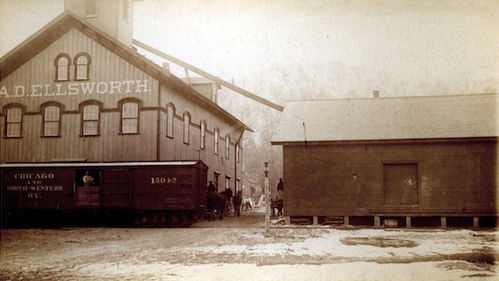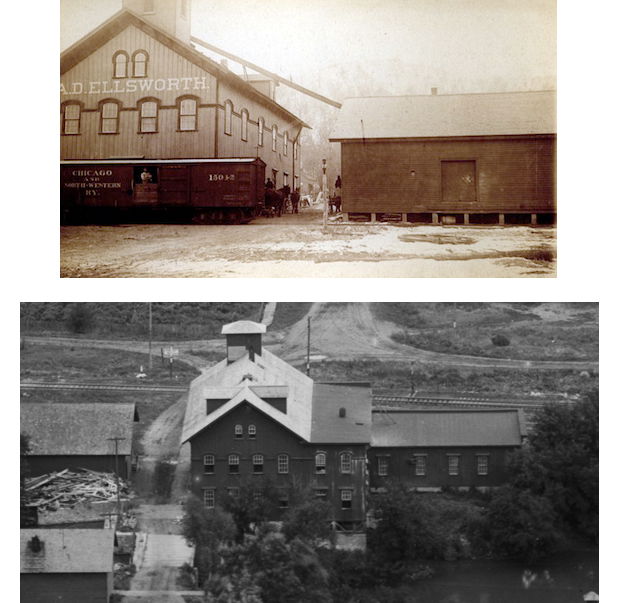Mills of Minnesota City

There were two significant early mills in Minnesota City. The first was known as the Troost Mill, believed to be near the site where the first 1852 settlers came ashore. It was built in 1866 by Otto Troost. The second mill was at the south end of Mill Street at the dam site, where a bridge spanned the creek. The original bridge crossed the dam supported by the dam abutments. Ellsworth’s mill was built in 1867 and and was powered by a dam across the Rollingstone creek, producing 150 barrels of flour a day The site is currently occupied by Canton Mills producer of natural base sustainable and certified organic fertilizers, owned by Dave Bunke. Excerpt from MCHA newsletter October 2008
Troost's Mill
Troost's Mill was built by Mr. Otto Troost in 1866. The mill was 50 x 80 feet in size, on the ground, and four stories high, and has a larger capacity of manufacture than any other mill on the stream. The power is partly supplied by diverting the creek, a distance of sixty rods, to the Mississippi bottom, making a fall of sixteen feet, while the natural creek flows two miles to reach the same level. A Corliss engine of 150-horsepower is also used, the two enabling the mill to manufacture 400 barrels of flour a day. The wheat is taken to the mill by a spur or side-track by the Winona & St. Peter railroad and is obtained mostly in the western part of the state. History of Winona County 1883
Ellsworth Mill
According to Erik Brom's History of Minnesota City, "The flour mill was built by Mr. A.D. Ellsworth is 1867. The building was a wooden structure built upon a strong stone foundation, in size 54x72 feet and three stories high. It had an elevator next to the side track and a detached warehouse 40x70 feet in size. The power was furnished by a dam across the Rollingstone Creek, giving a fall of ten feet. The capacity of this mill was 750 bushels of wheat or 150 barrels of flour per day....the mill was eventually destroyed by fire, but one can still see the crumbling foundation ruins on the banks of Garvin Brook just below the swinging bridge." MCHA newsletter December 2007

Top photo: Ellsworth Mill (date unknown)-MCHA archives. Bottom photo: Ellsworth Mill Library of Congress Detroit Photographic 1880